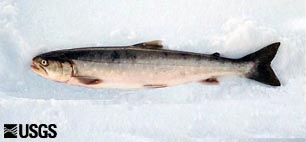- Home
- About S&T
- Taxa/Organisms
- Ecosystems
- Issues
- Methods & Tools
- Reports & Publications
- Location
- Search
2002 | Publisher: USGS | Science Center: Western Fisheries Research Center (WFRC, Seattle) | Format: URL
wfrc.usgs.gov — The value of this long-term monitoring program will provide data crucial for understanding demographic and reproductive characteristics of these endangered sucker populations. This research will have wide applicability to federal, state, and tribal agencies in the basin for management and recovery efforts.
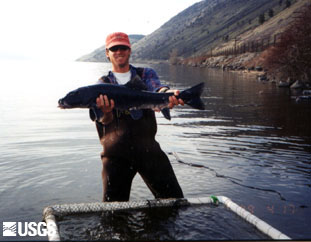
June 2001 | Publisher: USGS | Science Center: Upper Midwest Environmental Sciences Center (UMESC, LaCrosse) | Format: URL
www.umesc.usgs.gov — This report describes an electronic database containing 474 annotated citations that are relevant to fish passage through dams in large temperate floodplain rivers. The goal of this project was to survey the literature to help define the potential ecological consequences of restricted fish passage through dams in the Upper Mississippi River System More...
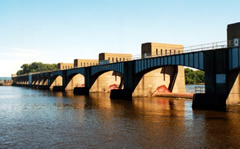
2001 | Publisher: USGS | Science Center: Upper Midwest Environmental Sciences Center (UMESC, LaCrosse) | Format: URL
www.umesc.usgs.gov — Research at the Upper Midwest Environmental Center, which gathered detailed observations on tree swallow nesting success and contaminant concentrations in 1998-2000, to guide EPA and the U.S. Fish and Wildlife Service in effectively managing the risk of chemical contaminants to wildlife and the environment.
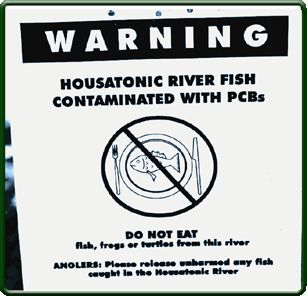
Publisher: USGS | Science Center: Western Fisheries Research Center (WFRC, Seattle) | Format: URL
wfrc.usgs.gov — In an attempt to decrease pesticide pollution of aquatic ecosystems, we have begun a project to develop biological control agents to protect plants against fungal diseases. This study has three objectives: (1) understanding how fungi cause disease; (2) understanding how plants that are symbiotic with certain fungi are resistant to fungal diseases; More...

Publisher: USGS | Science Center: Western Fisheries Research Center (WFRC, Seattle) | Format: URL
wfrc.usgs.gov — Threatened and endangered salmonids in the Pacific Northwest often use backwaters and wetlands as they migrate toward the ocean, however our understanding of the role of wetlands to juvenile salmonids is limited. The major Objective of this study was to determine whether juvenile steelhead were being tapped on the wetland during spring, and More...

Publisher: USGS | Science Center: Columbia Environmental Research Center (CERC, Columbia) | Format: URL
www.cerc.usgs.gov — The BFRS works cooperatively with team members from CERC and with faculty and graduate students of Department of Wildlife and Fisheries Sciences at Texas A&M University in research areas represented by the branch structure of the CERC including toxicology, ecology, biochemistry and physiology, environmental chemistry, ecogeography, and information More...

Publisher: USGS | Science Center: Western Fisheries Research Center (WFRC, Seattle) | Format: URL
wfrc.usgs.gov — Mercury contamination from historic gold mining operations is widespread in many rivers, lakes, and reservoirs on the western slopes of the Sierra Nevada. A multidisciplinary investigation by USGS is attempting to better understand mercury dynamics and to identify hot spots within Camp Far West Reservoir in order to determine if remediation More...

Publisher: USGS | Science Center: Western Fisheries Research Center (WFRC, Seattle) | Format: URL
wfrc.usgs.gov — An entrainment study at Grand Coulee Dam indicated that 200,000 - 600,000 kokanee were entrained, primarily at the 3rd powerhouse, during a 40-month time period. Following the recommendations of the Independent Scientific Review Panel, research was initiated to investigate a strategy to reduce entrainment by using strobe lights to repel salmonids More...

Publisher: USGS | Science Center: Western Fisheries Research Center (WFRC, Seattle) | Format: URL
wfrc.usgs.gov — This study will compare relative abundance, population structure, and spawning success of desert pupfish from natural (reference) and manmade or disturbed habitats in the Salton Sea basin. In addition, this study will determine the importance of fish predation as a source of mortality in desert pupfish populations. Finally, this study will attempt More...
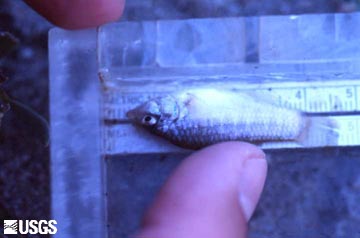
Publisher: USGS | Science Center: Upper Midwest Environmental Sciences Center (UMESC, LaCrosse) | Format: URL
www.umesc.usgs.gov — In the Upper Mississippi River, more than 80 species of fish use vegetated habitats during some portion of their life cycle. Fish depend on aquatic vegetation for abundant, high-quality food resources (plant-associated invertebrates) and refuge from predators. Vegetation abundance in the Upper Mississippi River substantially declined in the late More...
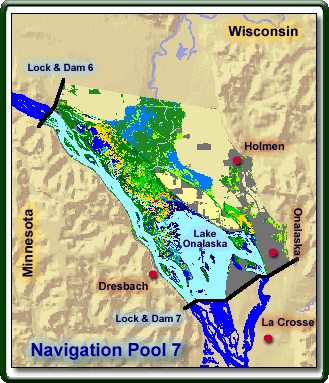
Publisher: USGS | Science Center: Western Fisheries Research Center (WFRC, Seattle) | Format: URL
wfrc.usgs.gov — Since 1994, scientists from the Anadromous Fish Ecology Team have been assisting the U.S. Army Corps of Engineers (USACE) in evaluating the migration behavior and passage of juvenile salmon and steelhead through Lower Granite Reservoir and Dam on the Snake River, WA. The goal of this study is to identify the behavior of individual juvenile salmon More...

Publisher: USGS | Science Center: Western Fisheries Research Center (WFRC, Seattle) | Format: URL
wfrc.usgs.gov — The Arctic charr (Salvelinus alpinus) in the northern most latitudes migrate to the ocean in the spring to feed and grow. This results in accumulation of polychlorinated biphenyls (PCB) in their visceral fat. During the winter, the charr reside in freshwater lakes and do not feed. They do mobilize lipids from adipose tissue for energy, which More...
